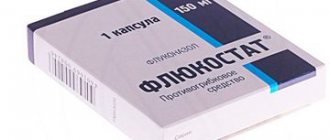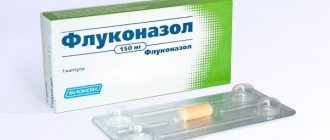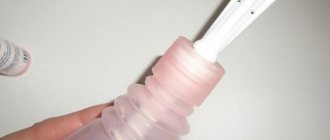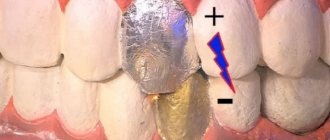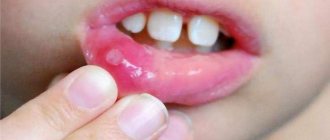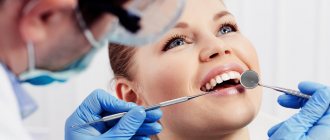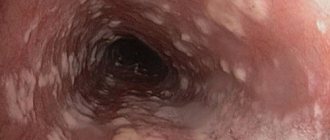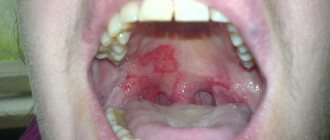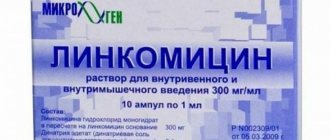A pharmacological drug called Diflucan is intended to combat fungal diseases, in particular, to treat thrush. It is made on the basis of fluconazole, so it has a wide spectrum of action.
Under its influence, the development and reproduction of pathogenic microorganisms and yeast-like fungi is suppressed. What Diflucan is, how it is used for thrush and what contraindications it has, we will find out about all this in the material.
About the drug
The main purpose of Diflucan is the treatment of vaginal and genital candidiasis in women and men, as well as the treatment of mycosis and onychomycosis of the oral cavity.
This drug belongs to triazole antifungal agents, therefore it has a powerful composition to combat similar infections of various natures. Fluconazole has antibiotic properties, thanks to which the life processes of harmful microorganisms are suppressed.
The main advantages of Diflucan include the following factors:
- No negative impact on women's hormonal levels.
- It has various release forms, which allows the drug to be used for the treatment of thrush in a form convenient for the patient.
- Helps block the processes of synthesis of cell membranes of pathological microorganisms. Therefore, the drug does not simply suppress fungal infections, but fights the resulting pathogenic microflora.
- The effectiveness of the product in the fight against such diseases has been proven through clinical trials.
We will find out further what forms of release and composition Diflucan for thrush has.
Treatment of oral thrush in children
It is extremely important to start therapy on time if thrush occurs in the child’s mouth. Only a pediatrician can decide how to treat the disease.
In addition to taking medications, it is necessary to carefully observe the rules of personal hygiene and sterilize all objects with which the child interacts. For adults, antifungal therapy is also recommended to eliminate the risk of re-infection.
And the diet requires correction. A nursing mother or child needs to eat vegetables, unsweetened fruits, lean meat or fish, buckwheat, and boiled eggs.
Completely excluded: coffee and black tea, sweet and rich foods; milk, mushrooms.
Drugs
Therapy and selection of medications always depend on the severity of the disease and age characteristics.
For children from the first birthday to six months, treatment consists of local treatment of the oral cavity with a soda solution (1 teaspoon per 1 liter of water). Antifungal medications are prescribed in rare cases.
After 6 months, treatment for oral thrush may include the use of medications such as:
- Candide. A medicinal solution that needs to be used to treat the oral cavity 3-4 times a day.
- Futsis DT. Tablets that need to be dissolved in water and the resulting liquid lubricated on the affected areas. The dosage is prescribed by the pediatrician.
- Miramistin. An antibacterial drug sold in the form of an ointment or solution. It is used to treat areas of the mucous membrane covered with plaque and cracks on the lips.
- Fluconazole, Diflucan. Medicines for systemic treatment in case of acute disease. The required dose of the drug depends on the child’s weight.
Treatment of candidiasis in children over one year of age includes the medications described above. These may be added to:
- Ferrum-Lek. Syrup containing iron.
- Fenistil. An antihistamine gel that should be applied to the skin around the mouth for severe itching.
- Hexoral. Spray with an antiseptic effect for treating the mouth. Appointed only after 3 years.
- Lugol's solution. Recommended if there are no allergic reactions to iodine. Used to lubricate cracked lips.
- B vitamins.
- Nystatin ointment. It is advisable to use no earlier than 12 years of age. Serves for treating skin.
Folk remedies
Treatment with traditional methods is acceptable in case of mild disease. The most common means:
- Infusions and decoctions of herbs (St. John's wort, sage, chamomile, eucalyptus, calendula). They are used for rinsing in older adults or for treating the oral cavity in children.
- Aloe juice. It has healing properties, but is very bitter. For this reason, it is more suitable for children aged two years and older. To use it must be diluted in water.
- Sea buckthorn oil. Effective in combination with herbal infusions. After rinsing or treating the mouth, apply it to the affected areas.
Komarovsky's technique
Komarovsky believes that the main reason for the appearance of such a disease as thrush in a child’s mouth is a violation of the protective functions of saliva. From his point of view, we can talk about the development of the disease if a plaque forms not only on the tongue, but also on the inside of the cheeks.
Basic principles of treatment:
- It is necessary to regularly give the baby something to drink, especially after feeding;
- Maintain optimal conditions in the room - a temperature of about 20 degrees and a humidity of at least 50%;
- Clear the nasal passages in a timely manner so that the child does not breathe through the mouth;
- Walk often and do not overheat the baby;
- Avoid prolonged crying as this can cause the oral mucosa to dry out.
All these measures will help normalize the necessary properties of saliva, which will lead to a cure for the disease. As a last resort, you can treat the oral cavity with a solution of baking soda.
Indications for use
Diflucan instructions for use for thrush indicate that the drug allows you to get rid of the following types of diseases:
- Generalized candidiasis. The urinary and respiratory tract, peritoneum and eyes are subject to treatment.
- Cryptococcosis. These are diseases associated with damage to the lungs, brain and skin.
- Candidiasis of the oral mucosa, esophagus and pharynx.
- Candidiasis of the genital type, which also includes the vaginal and acute type of the disease.
- Mycosis of the skin: legs, feet, groin area, etc.
It is worth noting that Diflucan is intended for people who are undergoing chemotherapy and radiation therapy against fungal infections. This drug is an excellent prophylactic to prevent the development of such diseases.
Contraindications
Before using the medicine, you should read its instructions. You should definitely read the chapter on contraindications to the use of Diflucan. One of the main prohibitions is taking the drug together with astemizole, cisapride and terfenadine. If a person has an individual intolerance to the composition of the drug, then its use in any form of release should be avoided.
It is contraindicated for use by women during pregnancy. The exception is when the fetus may be at risk from a fungal infection. With this fact, Diflucan is taken according to the individual doctor’s prescription. It is not recommended for women to take the drug while breastfeeding, since the likelihood of fluconazole getting into milk is very high. It is strictly prohibited to take the drug without a doctor's prescription.
You should also avoid taking Diflucan if you have the following ailments:
- liver diseases;
- the appearance of a skin rash on the body after taking the drug;
- formation of bullous lesions and erythema.
Instructions for use for thrush
Instructions for use of the drug describe the treatment regimen. But therapy must be carried out according to the doctor’s prescription, who, based on the study, will determine the severity of the disease and make an appropriate diagnosis. Based on this and the patient’s age, the doctor prescribes a dosage. The drug can be used both to treat fungal diseases and to prevent their occurrence. As a prophylactic measure, Diflucan should be used at a dosage of 150 mg once a month. Let's look at the features of taking Diflucan.
- For adults. If a woman has symptoms of vaginal candidiasis, then for treatment it is enough to take a one-time dose of Diflucan at a dosage of 150 mg. If a woman experiences frequent relapses of thrush, then the product can be used at a dosage of 150 mg every month. The duration of this course is about 10–12 m, which will eliminate the symptoms of chronic thrush.
- To treat candidiasis infections, the drug must be taken according to the schedule: the first dose is 400 mg, and all subsequent doses are 200 mg once a day. If this treatment regimen does not give positive results, then the dosage of the second and other days should be increased to 400 mg.
- To treat skin infections, you will need to take the drug at a dosage of 150 mg once every seven days. The duration of treatment under this regimen is no more than a month.
- Pityriasis versicolor can be eliminated in several ways: take the drug once a week at a dosage of 300 mg, or 50 mg every day for 2-4 weeks.
- For the treatment of onychomycosis, it is recommended to take 150 mg of the drug every 7 days, and the duration of therapy should last until a new nail grows.
- To cure oropharyngeal candidiasis, you will need to take the drug for several weeks at a dosage of 50 to 100 mg per day.
- Other types of fungal infections are treated by taking Diflucan at a dosage of 100 mg every day for one month.
- For children. It is necessary to treat candidiasis in a child with extreme caution. The first day dosage is 6 mg of the drug per 1 kg of weight. The next day it is reduced to 3 mg. If a baby is diagnosed with generalized or cryptococcal candidiasis, the dose is usually from 6 to 12 mg per 1 kg of weight. Prevention of fungal infections is carried out by taking medication from 3 to 12 mg per 1 kg of body weight. The drug can be used even for newborns. Typically, a dose of 3 mg is suitable for them, which should be taken at intervals of 72 hours.
- For older people. Diflucanim should be taken as for adults. But before use, be sure to make sure there are no contraindications. At the first sign of side effects, you should stop taking it.
Oral candidiasis
Oral candidiasis is a mycotic infection of the oral cavity caused by the opportunistic yeast-like fungi Candida albicans.
Oral candidiasis is manifested by hyperemia and swelling of the mucous membrane with soft or dense plaques of white plaque; dryness, burning, pain when eating; jamming, peeling and cracked lips. The diagnosis of oral candidiasis is based on a typical clinical picture and identification of the pathogen by microscopic and bacteriological examination. Treatment of oral candidiasis includes the prescription of antifungal drugs (topically and orally), taking antihistamines and vitamins, immunotherapy, and physiotherapy.
Symptoms of oral candidiasis
Manifestations of candidiasis of the oral mucosa are varied and depend on the patient’s age, the state of the immune system, the presence of concomitant diseases, medications (antibiotics, corticosteroids) and other factors.
According to the clinical course, acute and chronic forms are distinguished. Acute candidiasis can occur in the form of thrush (acute pseudomembranous candidiasis) or acute atrophic candidiasis.
Chronic candidiasis also exists in two clinical forms: chronic hyperplastic and chronic atrophic.
They can develop as independent forms or transform into one another.
Acute pseudomembranous candidiasis, or thrush (candidosis acuta, s. soor), is one of the most common forms of candidiasis of the oral mucosa.
In infants, thrush occurs frequently and is relatively mild.
In adults, acute pseudomembranous candidiasis is often accompanied by any general somatic diseases: diabetes mellitus, blood diseases, hypovitaminosis, malignant neoplasms, etc.
Most often the mucous membrane of the back of the tongue, cheeks, palate, and lips are affected. She is hyperemic and dry. Against the background of hyperemia, there is a white coating, reminiscent of curdled milk or cottage cheese, rising above the level of the mucous membrane.
At the beginning of the disease, it is easily removed by scraping with a spatula, revealing a smooth, slightly swollen, hyperemic surface underneath.
In severe, advanced cases, plaque becomes denser and is difficult to remove, revealing the erosive surface of the oral mucosa underneath.
Patients complain of a burning sensation in the mouth, pain when eating, especially spicy food.
Treatment
To effectively treat this disease, doctors act on the pathogen to increase nonspecific and specific protection, sanitize the oral cavity, and also recommend a balanced diet. Patients should be examined by a physician. Diseases of generalized candidiasis and visceral candidiasis are treated by mycologists. I would like to note that for successful treatment of this disease it is necessary to carefully examine and treat concomitant diseases.
Such diseases include gastrointestinal pathologies, diabetes mellitus and leukemia. If there is a persistent jam, then during prosthetics it is imperative to restore the height of the bite.
General treatment
- The purpose is to use the antifungal drugs Levorin and Nystatin, 1,000,000 units 4-6 times a day after meals. The course of treatment is 10 days. It is recommended to place the tablets under the tongue, crush them, and suck them, since they are poorly absorbed by the gastrointestinal tract.
- Good effect when dissolving Decamine in the form of caramel, 1-2 caramels 6-8 times a day after 3-4 hours. Caramels are placed under the tongue and behind the cheeks. It is advisable not to move your tongue so that the caramels remain on the oral mucosa for as long as possible.
- Amphoglucamine should be taken orally, 200 units 2 times a day after meals.
- Diflucan in capsules 50-100 mg 1 time per day (Diflucan is eliminated from the body for a long time).
- To influence the fungal flora and reduce dryness in the mouth, a solution of potassium iodide (2-3%) is prescribed, 1 tablespoon orally 2-3 times a day after meals.
- A nutritious diet with a reduced amount of carbohydrates and intake of vitamins B, B2, B6, PP and C.
- It is recommended to take calcium gluconate for a month, which has a general strengthening effect and relieves allergies. Suprastin, Diphenhydramine, Fenkarol, Pipolfen are prescribed as antiallergic drugs.
- They take iron supplements (Conferon, Ferroplex).
- To speed up recovery and strengthen the immune system, a vaccine is prescribed, and Methyluracil and Pentoxyl are also used.
Local treatment
- For applications and lubrication of the mouth, use 0.5% Decamine ointment and Amphoterecin B (30,000 units/g), 1% ointment and 1% solution of Clotrimazole.
- The mucous membrane of the mouth and the red border of the lips are treated with a solution of aniline dyes (violet).
- Rinse with 2-5% borax solution, 2% sodium bicarbonate solution, 2% boric acid solution. Rinse at least a glass, 4-5 times a day.
- Yeast infection and cheilitis are treated with Nystatin ointment (100,000 units per 1 g of base), 5% Levorin ointment, 0.5% Decamine ointment. Alternate ointments.
No information posted on this or any other page of our website can serve as a substitute for personal contact with a specialist. The information should not be used for self-medication and is provided for informational purposes only.
The site is maintained by pharmaceutical and medical professionals.
Source: https://www.webapteka.ru/diseases/desc1719.html
average price
Diflucan can cause the development of unpleasant symptoms, which manifest themselves in the form of nausea, dizziness, flatulence, diarrhea and swelling.
The average cost of Diflucan ranges from 450 to 2000 rubles, which depends on the dosage and packaging options. The drug has analogues, so it can be replaced with the following drugs:
- Vero-Fluconazole;
- Fluconazole;
- Flunol;
- Futsis;
- Ciskan.
These analogues have an almost identical composition as Diflucan, they only differ in name, cost and manufacturing companies. The best analogue is Fluconazole. We will find out how effective it is based on reviews from women who have experienced its effects on themselves.
Release form
Nystatin is produced in various forms, depending on the concentration of the active substance and price.
To treat stomatitis and thrush in children, you can use rectal suppositories that contain a dosage of 300 to 500 thousand units. compound substance. The set contains 10 candles or more. Remember to use tablets with the same amount of active substance in the composition. There are from 10 to 20 pieces in a package. They are used as complex therapy in treatment. For lubrication, an ointment is used, which contains 100 thousand units. and is available in tubes of 15-20 g. It is especially convenient to use nystatin in the form of drops. They are available in small 5 ml forms. To make solutions, dry powders are created, which are dissolved in water to drink or applied dry. A suspension of nystatin is used internally and for rinsing (dosage 200 thousand units).
Reviews
Elena, 35 years old. I tried to find the drug Diflucan at the pharmacy, but it was nowhere to be found. I asked the pharmacist what is the best substitute? I was advised of its analogue, which is called Diflazon. Its advantages include: low price and large selection of dosages. With his help, I got rid of the symptoms of thrush literally on the same day.
Svetlana, 32 years old. She took Diflucan at a dosage of 150 mg for several months, as the symptoms of the disease recurred periodically. The course of therapy lasted 8 months, after which the symptoms disappeared. Now I always buy it for thrush.
Irina, 28 years old. I no longer knew how to deal with this disease. I tried many analogues of Diflucan, but the symptoms appeared again and again. When I took a course of treatment with Diflucan, I became convinced of its effectiveness. The drug is effective and quickly relieves the unpleasant symptoms of itching and burning.
Description
Nystatin is an antimycotic agent, a polyene antibiotic with an antifungal effect.
The drug is widely used in gynecology, dermatology, dentistry, most often it is recommended for candidiasis, including in the vagina (thrush). The composition of the local drug is as follows:
- nystatin;
- lanolin anhydrous;
- soft white paraffin.
A gram of ointment contains 100 thousand units. main active ingredient. Nystatin is almost insoluble in water and alcohol and has a very bitter taste. Anti-fungal ointment is available in aluminum tubes; sometimes you can find the product on sale in glass jars. The amount of the drug is 10, 15, 30 g. Nystatin ointment is inexpensive - about 60 rubles / 15 ml.
In appearance, the product has a yellow-brown color and has a characteristic odor. It should be stored at a temperature no higher than 5 degrees - the ointment should only be placed in the refrigerator.
"Nystatin" is included in the group of specific and active antibiotics with antifungal properties. The medication destroys colonies of yeast-like fungi Candida at the cellular level, which contributes to the rapid fight against candidal stomatitis in children and adults. Small doses of the product are sufficient to effectively slow down the development of thrush. With systematic treatment, the fungus is completely destroyed.
When applying small doses of the product, the development of thrush slows down. With systematic use of the medicine, complete destruction of the fungus is observed. Benefits of use for stomatitis:
- low price;
- ease of use;
- lack of absorption into the systemic bloodstream;
- Possibility of treating wounds in infants.
The drug is applied pointwise only to the surface of wounds and erosions.
Features of the treatment of stomatitis with Nystatin:
- The drug in the form of an ointment against stomatitis is applied pointwise only to the surface of wounds and erosions.
- For the treatment of infants, an aqueous solution of tablets is used orally or a solution with vitamin B12 for local treatment.
- Drops are used for local sanitation of the oral cavity.
In case of an overdose of an anti-stomatitis drug, the following symptoms are observed:
- burning and itching in the treated area;
- hyperemia and swelling of the mucous membrane;
- development of a skin allergic reaction.
The maximum course of treatment against candidiasis in the mouth is 14 days when treated 2-3 times a day. The peculiarities of using Nystatin in different age categories are taken into account by the doctor when prescribing the drug.
